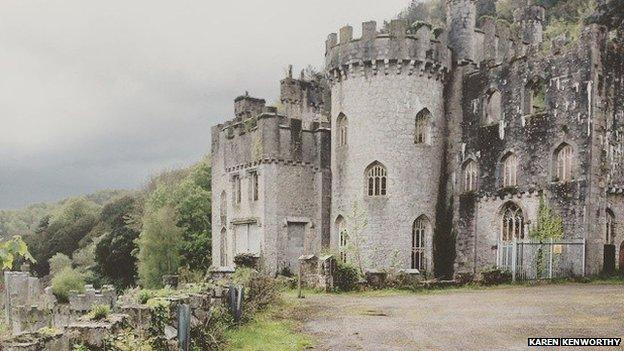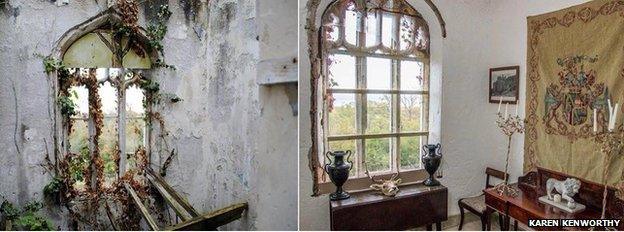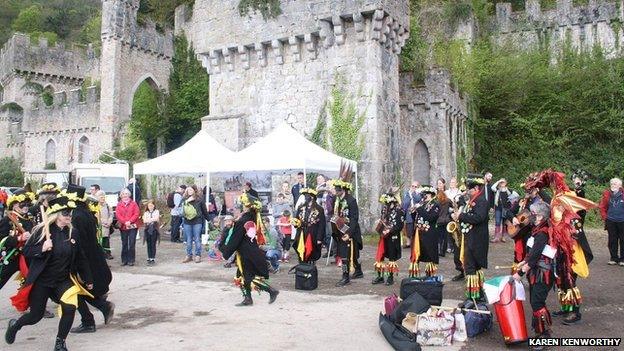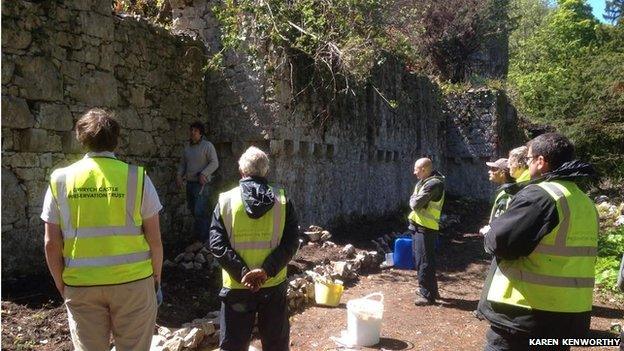Reopening Abergele's Gwrych Castle 'a dream come true'
- Published

The site was used as a burial mound and then as a temple for worshipping the Roman god Mercury
Ever since he was 12-years-old, Mark Baker has dreamed of saving the derelict 19th Century Gwrych Castle, nestled in the hills overlooking Abergele.
Now, after a 20-year battle, the architectural historian is set to fulfil his ambition as the Gwrych Castle Preservation Trust prepares to open the first section to be restored.
The Gardener's Tower has been painstakingly revamped to look exactly as it would have done when the last resident, Winifred Bamford-Hesketh, Countess of Dundonald, lived there a century ago.
It will be officially unveiled on Saturday.
Mr Baker, who is chairman of the trust, said: "Gwrych Castle is one of the most important buildings at risk in Wales.
"Since beginning the campaign to rescue Gwrych from dereliction in the mid-1990s, it has been my mission to try and restore the castle and grounds.
"By working together with the castle owners, EPM UK, the trust has restored its first building, the Gardener's Tower.
"This building was chosen as it sits at the centre of the formal garden and is the flagship for the restoration project.
"Our aim next is to start the process of rebuilding the Melon House for conversion into a visitor's centre."

How the Gardener's Tower at the castle looked before and after restoration work
Built between 1812 and 1822, the Grade I-listed castle is a manor house, which was home to the Bamford-Hesketh family for over a century.
The last resident, Winifred, was married to notable Boer War and World War One officer Douglas Cochrane, 12th Earl of Dundonald.
However, in the latter part of her life, Winifred appears to have lived there alone and when she died in 1924, rather than leaving it to her husband, she bequeathed it to King George V.
The king declined the inheritance and Douglas Cochrane - who outlived his wife by 10 years - bought it back, selling the contents in order to raise the purchase price.

It is hoped the castle's grounds can play host to events and open days
During World War Two, it housed 200 Jewish refugee children who had been saved by Sir Nicholas Winton, who was known as "the British Schindler".
In the 1960s it was a major north Wales tourist attraction, billed as the showplace of Wales, and hosted events as varied as motorbike rallies and Young Communist League conferences.
Despite attracting more than 10 million visitors in 20 years, by 1985 Gwrych Castle had fallen into disrepair and was closed to the public.

Much of the restoration work has been carried out by volunteers
A succession of new owners failed to raise the necessary funds for its redevelopment and the castle appeared doomed until Mr Baker's campaign to save it.
He said: "I am really excited that this first phase of restoration is complete. It's amazing to see how part of this ruin can be reborn and see how it would've looked in its heyday when the countess was alive."
- Published21 November 2012